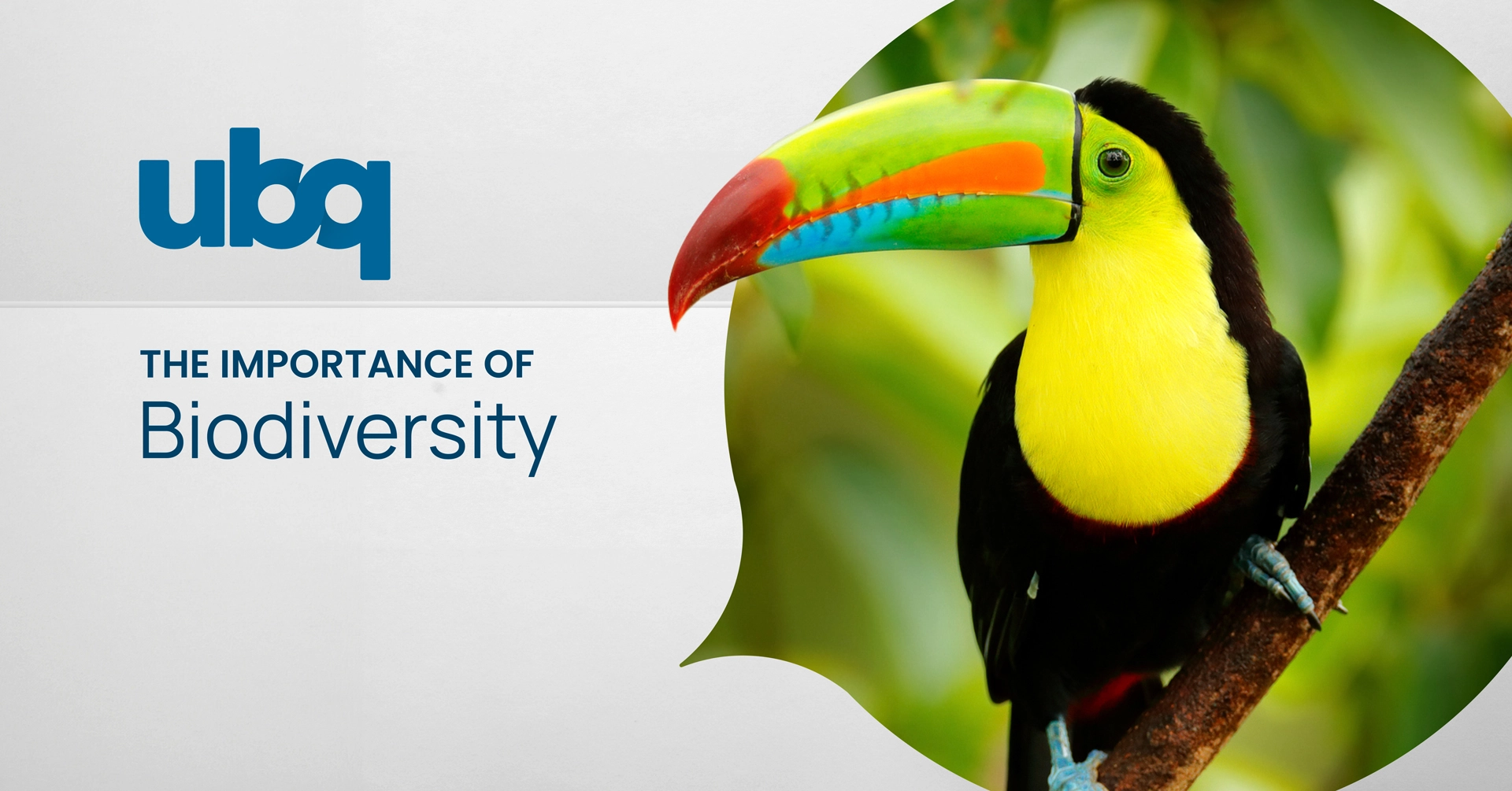Key Takeaways
- Biodiversity and Ecosystem Stability: Diverse ecosystems are more resilient to environmental stressors, ensuring critical processes like pollination and nutrient cycling continue.
- Measurement of Biodiversity: Methods include species richness, species evenness, genetic diversity, ecosystem diversity, indices, and modern technological tools.
- Biodiversity Loss: Driven by habitat destruction, climate change, pollution, overexploitation, and invasive species, leading to severe ecological and human consequences.
- Pollution’s Impact on Biodiversity: Pollution affects biodiversity through air, water, soil, and light pollution, each causing significant harm to ecosystems and species.
Biodiversity refers to the variety and variability of life on Earth. It encompasses the different species of plants, animals, fungi, and microorganisms, the genetic differences within these species, and the ecosystems they form. This diversity is essential for the health and stability of ecosystems and provides numerous benefits to humans.
Key Aspects of Biodiversity:
Species Diversity
This refers to the variety of different species within a region or ecosystem. There are currently about 1.2 million species identified, but scientists estimate that there may be as many as 8.7 million species in total, many of which are yet to be discovered, including numerous plant and animal species.
Genetic Diversity
This includes the genetic variation within a species. Genetic diversity is important because it helps populations adapt to changing environments and resist diseases.
Ecosystem Diversity
This refers to the variety of ecosystems in a given region within the natural world. Ecosystems such as forests, grasslands, wetlands, and oceans each host different communities of organisms and have distinct interactions and processes, for example, coral reefs and mangrove forests act as natural defences protecting coastlines from waves and storms.
Importance of Biodiversity
- Ecological Stability: Biodiversity contributes to the resilience of ecosystems, enabling them to recover from disturbances like natural disasters and human activities. The presence of diverse plant and animal species is crucial for maintaining ecological stability and the overall health of the planet.
- Ecosystem Services: Biodiversity underpins services that ecosystems provide, such as pollination of crops, purification of air and water, decomposition of waste, and regulation of the climate.
- Human Health: Many medicines are derived from plant and animal sources. High biodiversity can also help mitigate the spread of diseases by maintaining balanced ecosystems.
- Economic Value: Biodiversity supports industries such as agriculture, pharmaceuticals, and tourism, contributing significantly to the global economy.
- Cultural and Recreational Benefits: Diverse ecosystems provide recreational opportunities and have cultural significance for many communities.
- Endangered Species: Protecting endangered species is vital for preserving biodiversity. These species face threats from wildlife trafficking, habitat loss, and inadequate international treaties. Conservation efforts, including in situ and ex situ strategies, are essential to safeguard the most vulnerable species.
How Does Biodiversity Affect Ecosystem Stability, Services, and Contribute to Sustainability?
Biological diversity is fundamental to the stability and sustainability of ecosystems. It enhances resilience, allowing ecosystems to better withstand and recover from environmental stressors such as climate change, natural disasters, and human activities. Diverse ecosystems have multiple species performing similar functions, ensuring that critical processes like pollination, nutrient cycling, and decomposition continue even if some species are lost. Species composition has a major influence on ecosystem functioning and stability
For instance, forests with a variety of tree species are more likely to survive pest outbreaks and diseases because some trees will have natural resistance. Similarly, diverse plant communities can support a wide range of pollinators, essential for plant reproduction and the production of fruits and seeds.
Biodiversity also plays a vital role in sustaining ecosystem services that humans rely on, such as clean water, fertile soil, and clean air. Wetlands with diverse plant and animal life are more effective at filtering pollutants from water and mitigating flood impacts. Forests and other plant-rich environments are crucial for sequestering carbon dioxide, helping to combat climate change.
In essence, biodiversity acts as an insurance policy for ecosystems, enhancing their capacity to adapt to changes and maintain essential functions. This contributes to the long-term sustainability of ecosystems, ensuring they continue to provide vital services that all life, including human life, depends on.
How is Biodiversity Measured
Biodiversity is measured through various methods that consider the complexity and variety of life forms in an ecosystem. The most common approaches include:
- Species richness: counting the number of different species in a given area.
- Genetic diversity: assessing the genetic variation within a species.
- Ecosystem diversity: evaluating the variety of ecosystems in a region.
- Functional diversity: examining the range of different biological functions or processes in an ecosystem.
The Food and Agriculture Organization (FAO) plays a crucial role in biodiversity measurement and conservation. The FAO emphasizes the importance of biodiversity in safeguarding global food security. It highlights the vulnerability of critical plants and animals in the modern food chain when biodiversity is lacking, and the impact on food production in the event of a disaster.
Species Richness
This is the simplest measure, counting the number of species in a given area. It provides a basic understanding of the diversity within an ecosystem. However, it doesn’t account for the abundance of each species.
Species Evenness
This metric looks at how evenly the individuals in a community are distributed among the species present. Higher evenness indicates a more balanced ecosystem where no single species dominates.
Genetic Diversity
This measures the variation of genes within a species. It is crucial for understanding the adaptability and resilience of species to environmental changes. Genetic diversity can be assessed through DNA sampling and analysis.
Ecosystem Diversity
This considers the variety of ecosystems within a larger area, recognizing different habitats such as forests, wetlands, and grasslands. Each ecosystem type contributes to the overall biodiversity and ecological functions of a region.
Indices and Models
Several indices are used to quantify biodiversity, such as the Shannon-Weaver Diversity Index and Simpson’s Diversity Index. These indices take into account both species richness and evenness, providing a more comprehensive picture of biodiversity.
Technological Tools
Modern technology, such as satellite imagery and acoustic monitoring, helps in assessing biodiversity at larger scales. Citizen science programs like the Big Butterfly Count and Reef Life Survey also play a role in gathering data on species distribution and abundance.
Understanding and measuring biodiversity is essential for conservation efforts, allowing scientists to monitor changes and devise strategies to protect ecosystems.
Biodiversity Loss and Conservation
Biodiversity loss refers to the decline in the variety and variability of life forms within an ecosystem or the planet as a whole. This decline can have severe implications for the functioning and stability of ecosystems, impacting their ability to provide essential services such as pollination, water purification, and climate regulation. Notably, the risk of extinction for one-third of plant species highlights the concerning decline in plant life as a significant aspect of biodiversity conservation.
The primary drivers of biodiversity loss include:
- Habitat destruction
- Climate change
- Pollution
- Overexploitation of species
- Introduction of invasive species
Habitat loss, particularly due to deforestation for agriculture and urban development, is the most significant factor, as it leads to the fragmentation and complete eradication of natural environments. Climate change exacerbates these effects by altering temperature and precipitation patterns, which can render habitats unsuitable for many species.
Overfishing and wildlife trade also contribute significantly to biodiversity declines. Overfishing depletes marine populations faster than they can replenish, while illegal wildlife trade drives many species to the brink of extinction. Pollution from agricultural runoff, industrial waste, and plastic debris contaminates natural habitats, causing direct harm to wildlife and disrupting ecological processes.
The consequences of biodiversity loss are profound. It reduces ecosystem productivity and resilience, making ecosystems more vulnerable to diseases and environmental changes. This, in turn, affects human well-being by diminishing the natural resources and services we rely on, such as clean water, fertile soil, and stable climate conditions.
Efforts to combat biodiversity loss involve conservation initiatives, habitat restoration, sustainable resource management, and policies aimed at mitigating climate change and pollution. Global frameworks like the Intergovernmental Science-Policy Platform on Biodiversity and Ecosystem Services (IPBES) and international agreements strive to coordinate these efforts and monitor progress.
How Human Activities and Pollution Affect Biodiversity
Pollution has significant adverse effects on biodiversity, impacting the natural world and the various species that inhabit it. Different types of pollution—including air, water, soil, and light pollution—each contribute uniquely to the degradation of biodiversity.
Air Pollution
Pollutants such as sulfur dioxide and nitrogen oxides can cause acid rain, which alters soil and water pH levels, negatively affecting plant and animal life. Ground-level ozone damages plant tissues, reducing their ability to photosynthesize and grow. This disruption cascades through the ecosystem, affecting herbivores and predators alike.
Water Pollution
Contaminants like heavy metals, pesticides, and industrial chemicals can accumulate in water bodies, causing direct harm to aquatic species. These pollutants can lead to reduced reproductive rates, genetic mutations, and even death among fish and other aquatic organisms. Eutrophication, often driven by nutrient pollution from fertilizers, depletes oxygen in water, creating “dead zones” where life cannot sustain itself.
Soil Pollution
Pollutants such as heavy metals and agricultural chemicals disrupt the microbial communities in the soil, which are crucial for nutrient cycling and plant growth. This, in turn, affects the plants that rely on healthy soil, leading to reduced biodiversity and altered ecosystem functions.
Plastic Pollution
Both macroplastics and microplastics pose significant threats to wildlife. Larger plastic debris can entangle animals or be ingested, causing physical harm and often death. Microplastics, on the other hand, can be ingested by a wide range of organisms, leading to toxic effects that impair growth and reproduction.
Light Pollution
Artificial lighting disrupts the natural behaviors of many nocturnal species, including insects, bats, and other wildlife. This disruption can reduce feeding efficiency, mating success, and increase predation risks, leading to declines in populations and biodiversity.
Landfills and Innovative Solutions
Landfills are a significant source of pollution, contributing to the degradation of biodiversity through leachate, gas emissions, and habitat destruction
How UBQ Can Contribute to Biodiversity Preservation
UBQ Materials offers a pioneering solution to our planet’s growing trash problem, by using the organics and hard to recycle materials to give waste a new life. By diverting household waste destined to landfills and incinerators and converting it into an alternative material that removes greenhouse gas emissions, reduces the need for conventional plastics, and minimizes the extraction of natural resources, UBQ is also contributing to biodiversity preservation.
By transforming household waste into a new material replacement, UBQ™ helps mitigate marine pollution at its source. UBQ helps reduce the amount of non-degradable waste that reaches aquatic ecosystems, supporting life below water by offering a sustainable, circular solution that intercepts waste before it enters vulnerable ecosystems.
Moreover, the production and use of UBQ™ material reduces the need for landfill space and mitigates the environmental harm to land ecosystems. This circular approach helps conserve natural resources, reduces land pollution, and support biodiversity by reducing the ecological footprint of products traditionally made with extracted materials.
Looking Forward
Biodiversity is the cornerstone of ecosystem health and stability, providing many benefits essential to human survival and well-being. The variety of species, genetic makeup, and ecosystems ensures resilience against environmental changes, supports crucial ecosystem services, and underpins economic and cultural activities.
Biodiversity faces unprecedented threats from human activities, leading to habitat destruction, climate change, pollution, and overexploitation of resources. To safeguard biodiversity and its benefits, concerted global efforts in conservation, sustainable management, and innovative solutions like UBQ’s waste conversion technology are imperative. These measures will help reduce pollution, protect ecosystems, and promote a sustainable future for all life forms on Earth.


